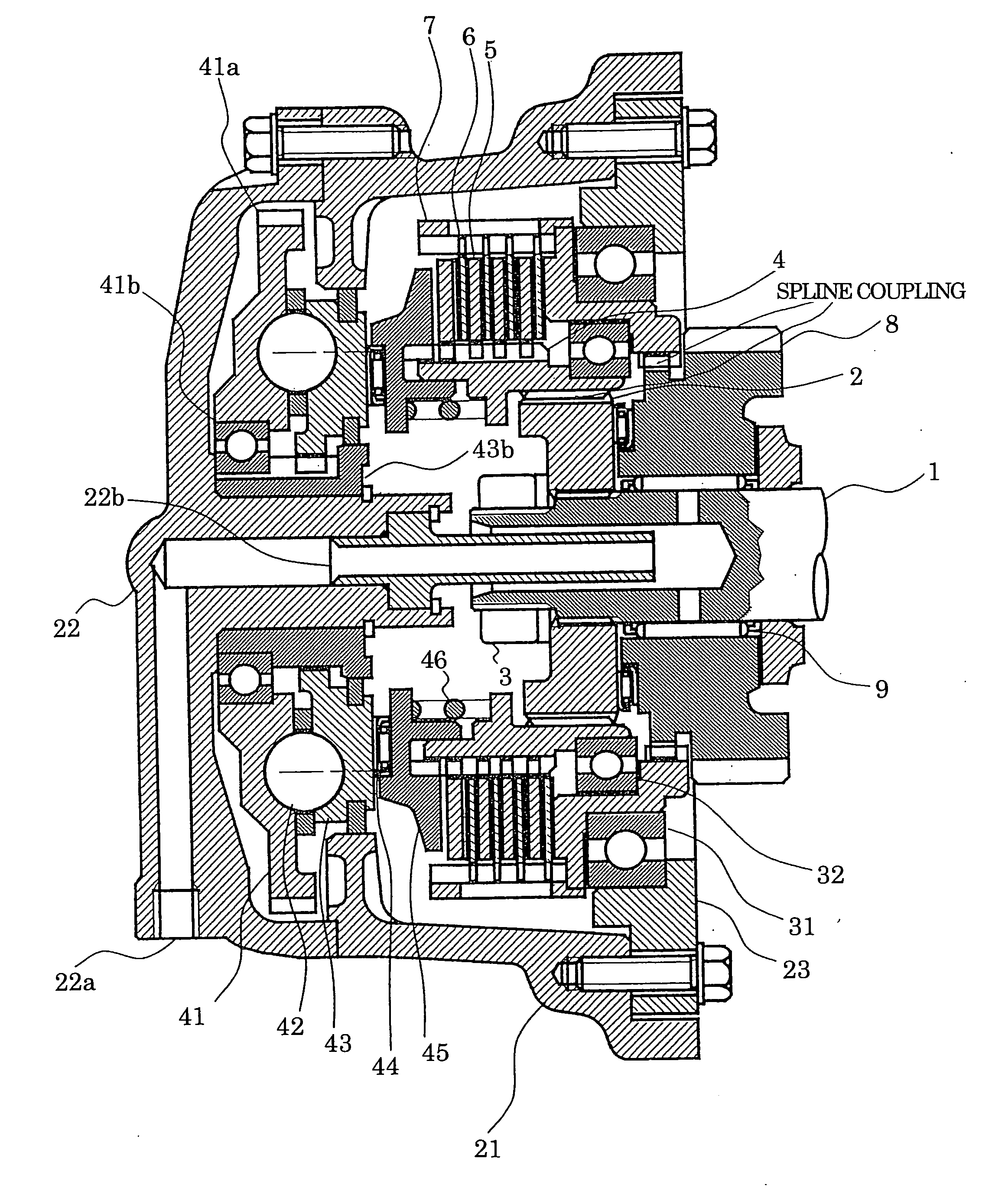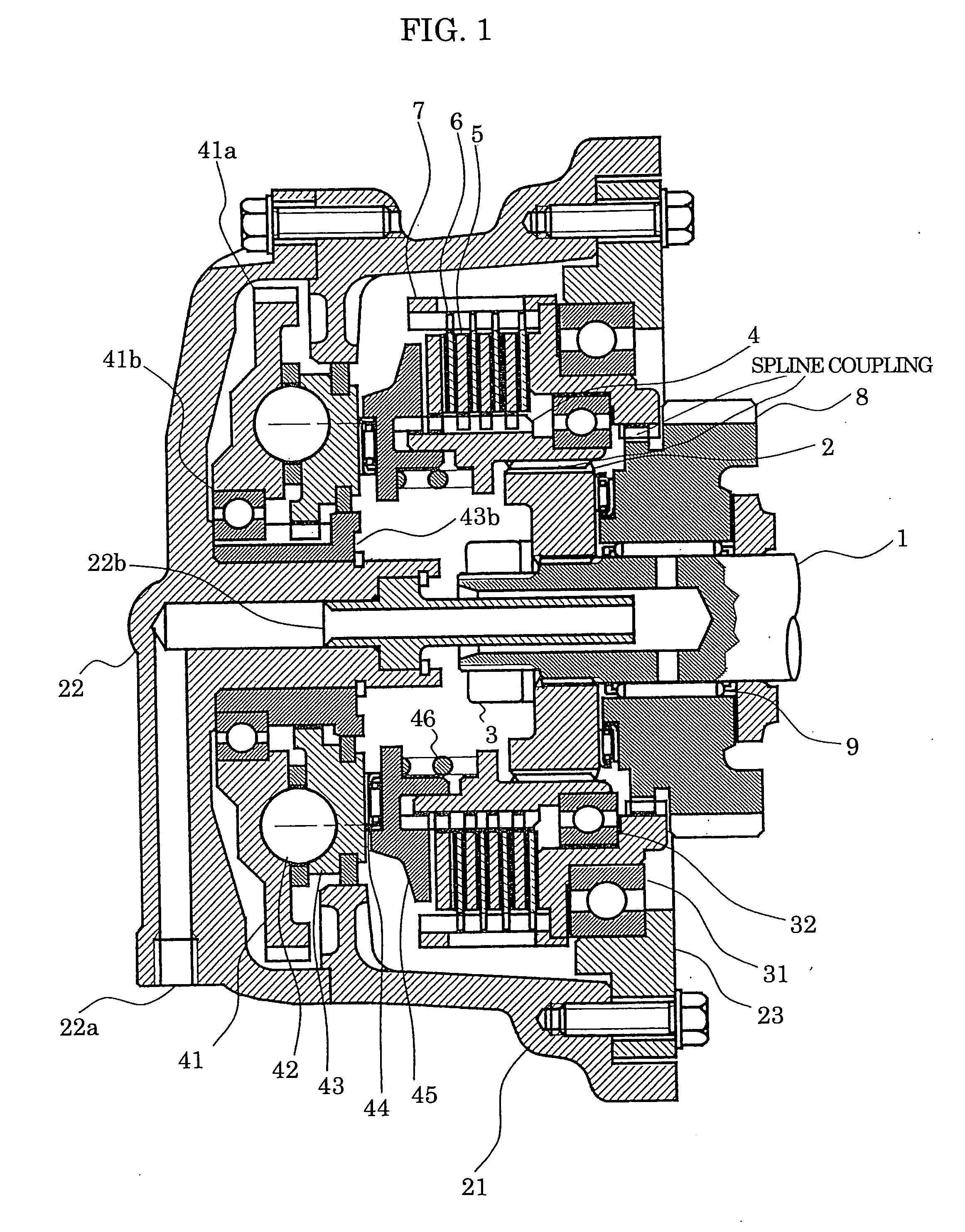Clutch mechanism free from influence of axial displacement of rotary member
a technology of rotary member and clutch mechanism, which is applied in the direction of clutches, non-mechanical actuator clutches, gear lubrication/cooling, etc., can solve the problems of generating axial thrust force as reaction force components, vibration and noise, and helical gears smeared, etc., to achieve the effect of effectively suppressing mutual interference, eliminating or reducing undesirable vibrational fluctuation of driving torque, and effectively suppressing torque transmission through the clutch
- Summary
- Abstract
- Description
- Claims
- Application Information
AI Technical Summary
Benefits of technology
Problems solved by technology
Method used
Image
Examples
Embodiment Construction
[0021] An embodiment of the present invention will be described with reference to FIGS. 1 to 5. Referring to these Figures, a clutch mechanism embodying the present invention has the following parts or components: an input shaft 1 carrying an inner hub 2 fastened thereto by a shaft end nut 3; a hub 4; first friction discs 5; second friction discs 6; a drum 7; a gear 8 supported by needle bearings 9; a clutch case 21; an end cap 22 having a lubrication oil port 22a; a lubrication oil supply pipe 22b; an intermediate plate 23; a drum support bearing 31; a hub supporting bearing 32; a rotary ramp member 41; a gear 41a; a rotary ramp support bearing 41b; balls 42; a translational ramp member 43; a guide member 43b; a thrust bearing 44; and a pressure plate 45. In FIGS. 5A and 5B illustrating the principle of operation of the ball-ramp type clutch actuator, numerals 52, 53 denote discs, while numeral 53 denotes balls.
[0022] Referring specifically to FIG. 1, the input shaft 1 serving as ...
PUM
 Login to View More
Login to View More Abstract
Description
Claims
Application Information
 Login to View More
Login to View More - R&D
- Intellectual Property
- Life Sciences
- Materials
- Tech Scout
- Unparalleled Data Quality
- Higher Quality Content
- 60% Fewer Hallucinations
Browse by: Latest US Patents, China's latest patents, Technical Efficacy Thesaurus, Application Domain, Technology Topic, Popular Technical Reports.
© 2025 PatSnap. All rights reserved.Legal|Privacy policy|Modern Slavery Act Transparency Statement|Sitemap|About US| Contact US: help@patsnap.com



